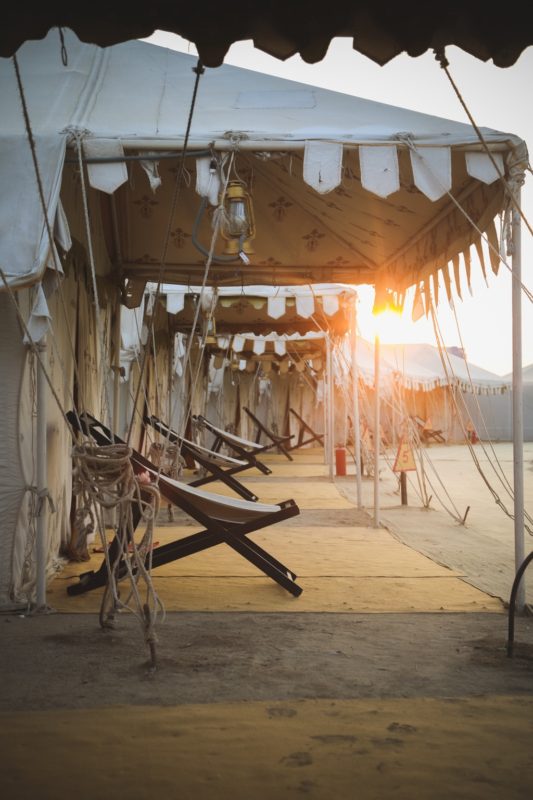Rann Utsav, Banni Grasslands, Flamingo City and Mangroves
 When the Star of the Millennium says ‘Kutch nahi dekha toh kuch nahi dekha’ the tourism industry has to flourish. Moreover, the beauty of the white rann, mangroves & flamingo city is mesmerizing.
When the Star of the Millennium says ‘Kutch nahi dekha toh kuch nahi dekha’ the tourism industry has to flourish. Moreover, the beauty of the white rann, mangroves & flamingo city is mesmerizing.
Kutch usually celebrates the Rann Utsav during wintertime. Rann Utsav is a very unique experience and it has got the international attention to the tourist flows. It becomes very difficult to get good hotels and rooms nearby Bhuj during the three months of Rann Utsav. Hotel room occupancy is almost more than 90% during the said period. The best time to visit is around the new year.
Ecological tourism is an important aspect of the industry. Kutch provides extremely unique ecological regimes creating vast potential in this sector. The Great and the Little Rann of Kutch and their associated features such as Banni Grasslands are unique physical features in the world. Banni Grasslands Reserve or Banni grasslands form a belt of arid grassland ecosystem on the outer southern edge of the desert of the marshy salt flats of Rann of Kutch in Kutch District, Gujarat State, India. They are known for rich wildlife and biodiversity and are spread across an area of 3,847 square kilometres. They are currently legally protected under the status as a protected or reserve forest in India. The Gujarat State government is developing Chari-Dhand Wetland Conservation Reserve, along with the surrounding areas in and around the Banni grasslands in the district of Kutch, for ecotourism.
The Great Rann of Kutch is a unique geomorphic feature with an identical ecology. It is a massive low lying area with 18,130 sq. km of landmass; a saline desert and a flat land formation with alluvial and colluvial silt and sand deposits. It merges with the Thar Desert of Pakistan and Rajasthan in the north and surrounded by Banaskantha district in the east, the Little Rann of Kutch in the south-east, Banni Grasslands and Kala Dungar in the south and Kori Creek in the Arabian Sea in the west. The Great Rann has thirteen islands in it and seasonal inundation by rainwater and diurnal inundation by seawater, coupled with a high inherent salt content of the soil are the major characteristics. Leaving the islands or the raised lands and for a few highly salt-tolerant halophytes like Suaeda spp. and Atriplex spp., etc the Rann is devoid of any vegetation.
The Little Rann of Kutch is the southward extension of the Great Rann and is very similar in physiography, edaphic conditions, eco-climate and vegetation. It has 23 small islands and an area of 5180 sq. km. Little Rann, however, is different from the Great Rann in terms of inundation regime. It serves as a nursery during the monsoons for many marine animals and fishes including prawns. It is also the last home of endemic Asiatic Wild Ass, Equus hemionus khur, locally called Ghorkhur normally found in the islands.
Banni Grasslands are ecologically disguised grasslands with very sparsely distributed small settlements. It is about 3000 sq. km. flat but slightly raised newly formed land. Silt deposition and receding of the sea are two main reasons of its formation. Today, a landlocked mangrove of some fifty-odd ‘Cher’ (Avicinnia marina) trees in the southern border of Banni is the sole evidence of the ancient shoreline and indicates that Banni is mainly a benthic silt deposition exposed due to the receding of the sea. Though a very flat land having a gradient as low as 1 in 6000 to 1 in 10,000, it is slightly raised towards the north. In the south towards the mainland, it forms a depression which gets inundated during monsoon, forming a saline desert once the water gets evaporated. The raised lands are good grasslands though some of these are occupied by exotic flora. These grasslands are providing a good habitat for chinkara, nilgai, reptiles and birds of prey. Wolf and jackals are the main predators in these parts of the forest. In the south, low lying areas experiencing seasonal inundation provide a breeding site to many migratory birds. The Banni is inhabited by a community called Maldhari, which is a traditional livestock breeder community. The villages in Banni area are famous for traditional Kutchi huts called Bhunga and embroidery by women.
Flamingo City the marshes of Kutch are only known breeding grounds for flamingos in India. In a cycle of once in a decade, when favourable condition prevails, plenty of flamingos breed in islands of Great Rann, following a good rainfall. These can be seen in Dhand, in Banni, which is accessible by 48 hours journey on camel though marshy land.
Moreover, around 293 sq. km. of the area in the western Kutch is covered by mangrove forests. Main species of these mangroves are Avicinnia marina,Rhizophora mucronata and Ceriops roxburghiana. Mangroves are extremely useful ecosystem as they provide a breeding ground for many marine animals and some of which have high commercial value products. They also prevent coastal erosion and high turbidity, which results in an environ-suitable for the survival of marine life.
For More Information Visit Official Website:

